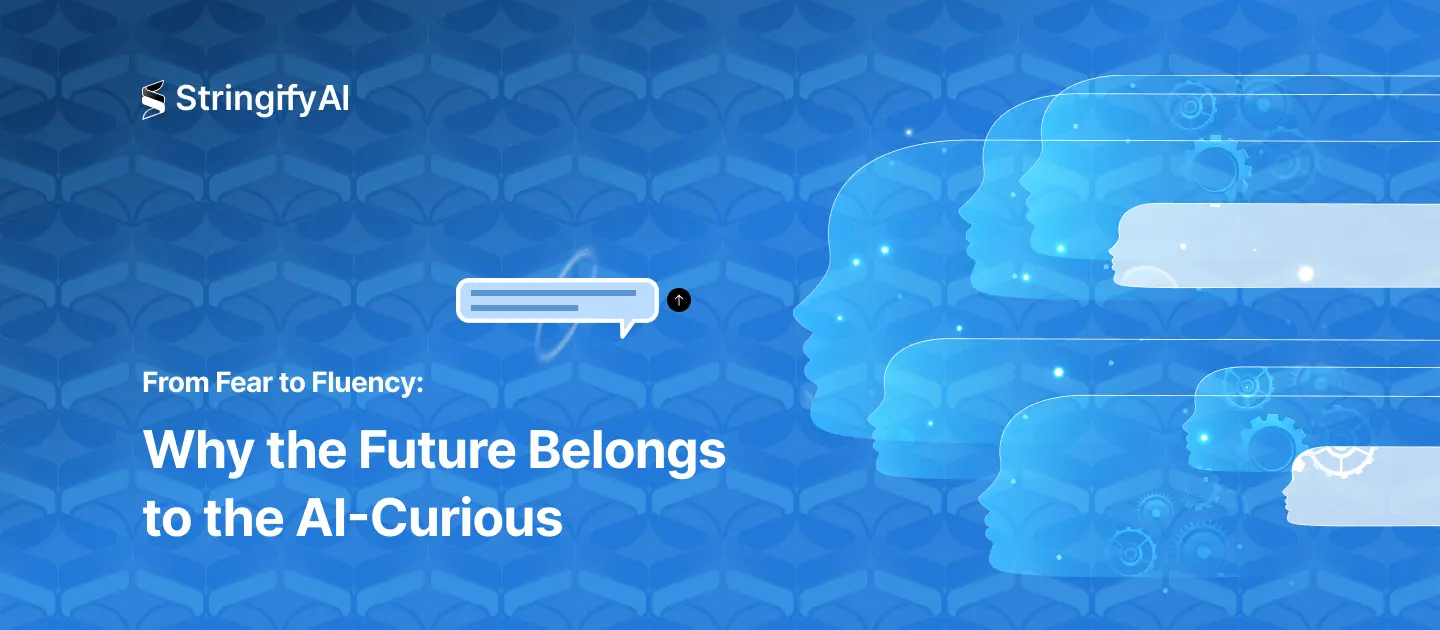From Fear to Fluency: Why the Future Belongs to the AI-Curious

In the age of AI, the most valuable skill isn’t coding. It’s- curiosity
🤔 Part 1: The Hidden Barrier to AI Adoption? Fear.
AI is everywhere—from ChatGPT in your browser to Copilot in your IDE. But while media narratives push excitement and disruption, most professionals aren’t sprinting to adopt. Instead, they’re hesitating.
And the reason isn’t laziness. It’s fear.
- Fear of incompetence: “What if I use it wrong?”
- Fear of judgment: “Will I look like I’m playing instead of working?”
- Fear of obsolescence: “If AI can do my job, what’s left for me?”
- Fear of mistakes: “What if the tool gives biased or harmful output?”
This silent anxiety creates an invisible divide:
The AI-curious vs. the AI-resistant.
Not experts vs. novices. Not technical vs. non-technical.But those who experiment… and those who hesitate.
🔍 Part 2: Reframe the Challenge — Not Mastery, But Curiosity
Here’s the mental unlock:
You don’t need to master AI before using it.
You need to get curious with it.
The AI-curious aren’t the most technical people in the room.
They’re the ones who ask:
“What happens if I try this?”
They tinker with prompts.
Blend AI into slide decks, emails, outreach.
And most importantly—they share what they learn.
Curiosity is not a “soft” skill.
It’s the new literacy of the AI era.
🔄 Part 3: The Fluency Loop — How Curiosity Becomes Capability
Fluency isn’t an on/off switch. It’s a loop:
1. Play —
Low-stakes exploration: ask silly questions, try new tools.
2. Practice —
Integrate into daily work: writing, planning, summarizing.
3. Pattern Recognition —
Learn what prompts work. Build a prompt bank.
4. Productivity —
Use AI with intention, speed, and creativity.
You don’t get fluent by watching tutorials. You get fluent by playing—with purpose.
Each loop makes the next one easier.Confidence comes from experimentation, not the other way around
🧑🤝🧑 Part 4: Why Organizations Need AI Fluency (Not AI Experts)
Research shows knowledge workers can save 20–40% of their time using AI. But the real gains aren’t just time saved—they’re capabilities unlocked:
- A junior writer delivers exec-level memos.
- A non-designer builds visuals in minutes.
- A policy analyst summarizes 50-page docs in seconds.
Fluency compounds.
But it only scales with the right environment:
- 🧪 Time to explore new tools
- 🧠 Psychological safety to fail
- 🗣️ Peer learning to spread skills organically
AI doesn’t transform companies. Curious teams do.
🛠️ Part 5: Build the New Learning Stack
Legacy LMSs (Learning Management Systems) weren’t designed for fast-moving, exploratory skills like AI prompting.Instead, we need sandbox learning:
- 🧰 Prompt libraries, not static modules
- 🔁 Real-time feedback, not quizzes
- 🤝 Jam sessions, not lectures
AI upskilling isn’t knowledge transfer. It’s habit change.
If people aren’t using AI weekly, fluency won’t stick
🧠 Part 6: Flip the Mindset — From Scarcity to Agency
Scarcity narratives block growth:
- “There aren’t enough AI experts.”
- “You’re already behind.”
- “Only the elite 1% will benefit.”
But the truth is:
Everyone’s a beginner.
The tools change weekly. No one has it all figured out.
What matters most?
- Showing up.
- Asking questions.
- Sharing experiments.
That’s agency. And it’s available to anyone
💡 Part 7: Real Stories of the AI-Curious
- A teacher uses ChatGPT to personalize lesson plans.
- A sales team builds a shared prompt book.
- A nonprofit staffer summarizes legal docs in seconds.
- A CEO drafts internal memos with AI, saving hours weekly.
These aren’t outliers. They’re early signals of what normal will look like.
🏁 Part 8: Try This — A 5-Day Curiosity Sprint
Want to go from hesitant to hands-on in a week? Try this:
| Day | Activity |
|---|---|
| 1 | Explore one AI tool (e.g. ChatGPT, Claude). Ask it 5 playful questions |
| 2 | Use it on a real task—email, to-do list, recap. |
| 3 | Compare prompts: try 3 ways of asking the same thing. |
| 4 | Teach a peer what you learned. |
| 5 | Reflect: What clicked? What surprised you? What will you try next? |
🚀 Conclusion: The Future Belongs to the AI-Curious
The real divide isn’t between technical experts and the rest of us. It’s between those who engage… and those who wait.
- You don’t need permission.
- You don’t need a certificate.
- You just need to start.
So be the curious one in the room. Open the tool. Try something. Share what you learn.
Because in the age of AI, fluency isn’t a status. It’s a behavior. And it begins with curiosity.